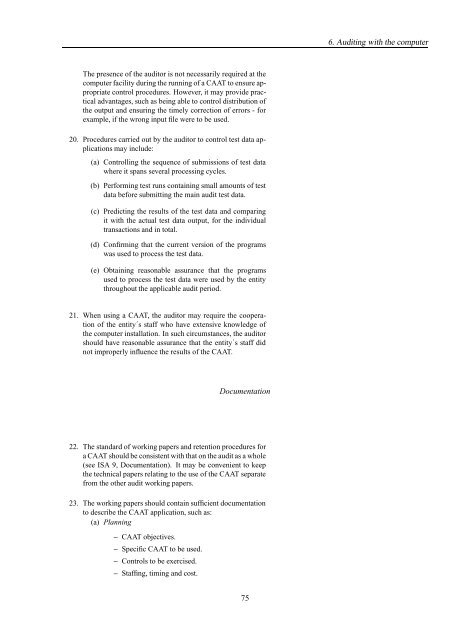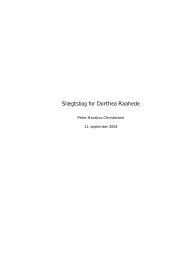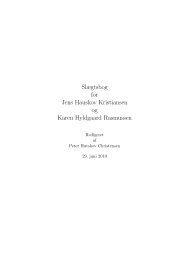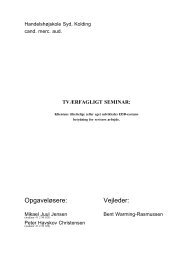PDF uden ophavsretligt beskyttede sider - Peter Havskov Christensen
PDF uden ophavsretligt beskyttede sider - Peter Havskov Christensen
PDF uden ophavsretligt beskyttede sider - Peter Havskov Christensen
Create successful ePaper yourself
Turn your PDF publications into a flip-book with our unique Google optimized e-Paper software.
The presence of the auditor is not necessarily required at the<br />
computer facility during the running of a CAAT to ensure appropriate<br />
control procedures. However, it may provide practical<br />
advantages, such as being able to control distribution of<br />
the output and ensuring the timely correction of errors - for<br />
example, if the wrong input file were to be used.<br />
20. Procedures carried out by the auditor to control test data applications<br />
may include:<br />
(a) Controlling the sequence of submissions of test data<br />
where it spans several processing cycles.<br />
(b) Performing test runs containing small amounts of test<br />
data before submitting the main audit test data.<br />
(c) Predicting the results of the test data and comparing<br />
it with the actual test data output, for the individual<br />
transactions and in total.<br />
(d) Confirming that the current version of the programs<br />
wasusedtoprocessthetestdata.<br />
(e) Obtaining reasonable assurance that the programs<br />
used to process the test data were used by the entity<br />
throughout the applicable audit period.<br />
21. When using a CAAT, the auditor may require the cooperation<br />
of the entity´s staff who have extensive knowledge of<br />
the computer installation. In such circumstances, the auditor<br />
should have reasonable assurance that the entity´s staff did<br />
not improperly influence the results of the CAAT.<br />
Documentation<br />
22. The standard of working papers and retention procedures for<br />
a CAAT should be consistent with that on the audit as a whole<br />
(see ISA 9, Documentation). It may be convenient to keep<br />
the technical papers relating to the use of the CAAT separate<br />
from the other audit working papers.<br />
23. The working papers should contain sufficient documentation<br />
to describe the CAAT application, such as:<br />
(a) Planning<br />
– CAAT objectives.<br />
– Specific CAAT to be used.<br />
– Controls to be exercised.<br />
– Staffing, timing and cost.<br />
75<br />
6. Auditing with the computer





